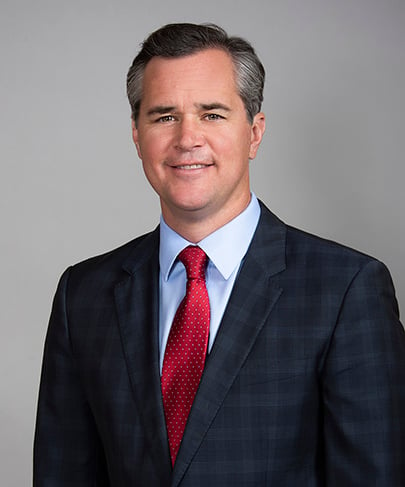Ohio Legislature Adopts New Wind and Solar Siting Law S.B. 52 Requires County Commission Approval
DOWLOAD PDFClick “Subscribe Now” to get attorney insights on the latest developments in a range of services and industries.
On June 28, 2021, the Ohio General Assembly passed Substitute Senate Bill 52, a significant revision to Ohio’s power siting approval process for utility-scale solar and wind projects. Governor Mike DeWine is expected to sign the bill into law, with an expected effective date in early October 2021.1
Sponsored by Senators Rob McColley (R-Napoleon) and Bill Reineke (R-Tiffin), S.B. 52 aims to increase local awareness and input from property owners – and to require approval from local county officials.2
In short, the law requires a new upfront approval from the County Commission prior to the developer moving forward with the state siting process for certification of utility-scale solar and wind projects. This legislation has five major components:
- Grandfathers certain wind and solar projects already in development, not subjecting them to local approval mechanisms in S.B. 52.
- Subjects future projects to review by County Commissioners before developer submitting application to the Ohio Power Siting Board.
- Allows County Commissioners to establish restricted areas where wind and solar projects are prohibited, subject to referendum.
- Adds two more voting members to the Ohio Power Siting Board (OPSB) to now include county and township government representatives or designees on solar and wind projects.
- Requires developers to submit decommissioning plans when applying to OPSB.
Background
The Ohio Power Siting Board, housed within the Public Utilities Commission of Ohio, is responsible for approving the siting of major utility facilities and ensuring that they meet requirements specified in Ohio law. The OPSB issues certificates following a rigorous application process, including notice, hearings, testimony, fees, and an OPSB staff investigation. Projects subject to OPSB jurisdiction are generally not subject to the zoning regulations of the local municipal corporation, county, or township.
Wind and Solar Project Certificates and “Material Amendments”
S.B. 52 revises this approval process for new applications or “material amendments” to existing certificates for an “economically significant wind farm,” a “large wind farm,” or a “large solar facility.” R.C. 303.57.
Under the bill, an economically significant wind farm refers to wind turbines and associated facilities with a single interconnection with the electrical grid capable of generating at least five megawatts (MWs) but not more than 50 MWs. R.C. 303.57 (A). A large solar facility or large wind farm means an electric generating plant that consists of solar panels and associated facilities or wind turbines and associated facilities with a single interconnection to the electrical grid capable of operation at 50 megawatts or more. R.C. 303.57 (B).
A material amendment would:
- Increase the facility’s nameplate capacity
- Change the facility’s generation type from one type of utility facility to another, or
- Change the facility’s boundaries, unless the new boundaries of the facility are entirely within the previous boundaries of the facility or the facility components outside the previous boundaries are underground.
- For wind projects, increase the number or height of turbines. R.C. 303.57(C).
Application to Pending Projects – “Grandfathering”
The bill specifies that it does not apply to certain pending wind and solar projects, effectively “grandfathering” those projects meeting certain criteria. The grandfathering provisions are separate for pending wind and solar projects. See Sections 3, 4, and 5 of S.B. 52.
For solar, S.B. 52’s required County Commission approval does not apply to applications for a certificate or material amendment to an existing certificate that, as of the bill’s effective date have received a completed System Impact Study from PJM and paid the fee for the facilities study to PJM. Solar projects with that study in hand that have paid the fee by the bill’s effective date are grandfathered. Section 4 of S.B. 52.
If, after the effective date, in order to participate in PJM’s capacity market, a large solar facility submits a new queue position for an increase in its capacity interconnection rights, the change in capacity interconnection rights does not subject the facility to the local approval provision, provided that the change in rights occurs without increasing the facility’s nameplate capacity. Division (D) of Section 4 of S.B. 52.
If, after the effective date of this section, an applicant for a large solar facility files an additional new service request with PJM, pertaining to the same facility that is in the new services queue, the application is subject to review by the board of county commissioners of the county in which the utility facility is to be located. Division (C) of Section 4 of S.B. 52.
For wind, S.B. 52’s required County Commission approval does not apply to applications for a certificate, or material amendment to an existing certificate, that as of 30 days after the bill’s effective date, have received a letter of completeness from OPSB. Wind projects deemed complete within 30 days of the bill’s effective date are grandfathered. Section 3 of S.B. 52.
County Approval on Project Basis
The bill establishes a 90-day period of review of wind and solar projects by the applicable Board of County Commissioners. After a public meeting is held where the project is described, Commissioners can 1) deny the project, 2) modify the footprint, or 3) take no action in which case the applicant can proceed to OPSB on the 91st day. But note the applicant must apply to OPSB within 300 days. The process also now requires several steps intended to encourage additional local awareness and input regarding the project.
- Local Pre-Application Meeting: At least 90 days, but no more than 300 days before applying for a certificate, or an amendment to an existing certificate, the applicant must hold a public meeting in the county. R.C. 303.61(A)
- Notice of Meeting: The applicant must provide written notice regarding the meeting to the Commissioners and the boards of trustees of every township within the county in which the utility facility is to be located at least 14 days before the meeting. R.C. 303.61(B)
- Meeting Information: The applicant must provide specific information about the project at the meeting: 1) the facility type (economic significant wind farm, large wind farm, or large solar facility), 2) the maximum nameplate capacity for the facility, 3) and a map of geographic boundaries of the project. R.C. 303.61(B)
- County Review after Meeting: 90 days after the local pre-application public information meeting, Commissioners may take three actions: 1) adopt a resolution prohibiting construction of the project, 2) adopt a resolution limiting the project footprint, or 3) not adopt a resolution within 90 days of the meeting. R.C. 303.62
- Should the Commissioners not adopt a resolution, the applicant may proceed with the OPSB process.
Restricted Areas/Zones in Counties
In addition to the specific project approval requirement described above, the bill also grants County Commissioners a separate, independent manner to restrict wind and solar development. By resolution adopted at a public meeting, County Commissioners may designate all or part of the unincorporated area of the county as a restricted area where the construction of an economically significant wind farm, a large wind farm, or a large solar facility is prohibited. R.C. 303.58.
Commissioners must provide 30 days advance public notice of the meeting to ensure local awareness when considering a resolution designating restricted areas. R.C. 303.58 (C). Under this section, public notice consists of publishing in a newspaper of general circulation in the county and providing written notice to the Township Trustees, school districts, and libraries within the proposed restricted area.
A county resolution to create restricted areas take effect 30 days after adoption and is subject to referendum. R.C. 303.59. Referendum petitions must be signed by the number of qualified voters residing in the county equal to at least 8% of the total votes cast for all candidates for governor in that county at the most recent general election at which a governor was elected.
Approval for any project must be obtained from the county, even if it is outside a designated restricted area. However, a resolution adopted under R.C. 303.58 does not apply to a project that was effectively approved (by not being prohibited) within the 90-day period established under R.C. 303.62. R.C. 303.58(E). In other words, the establishment of the restricted area is prospective.
Local Officials Added to Ohio Power Siting Board
Under current law, the OPSB is an 11-member board consisting of the PUCO chairperson, who serves as the chairperson and chief executive officer; the directors of Environmental Protection, Development. Services, Health, Natural Resources, and Agriculture; a representative of the public; and four nonvoting legislative members. The member representing the public, who must be an engineer, is appointed by the governor for a four-year term, from a list of three nominees submitted to the governor by the Office of the Consumers’ Counsel. This member’s appointment is subject to the advice and consent of the Senate. Additionally, the Speaker of the House of Representatives, the Senate President, and the Minority Leaders of the House and Senate each appoint one legislative member and an alternate member to attend the OPSB meetings in the absence of the appointed members.
S.B. 52 adds two voting “ad hoc” members to the OPSB for considering wind and solar applications and material amendments to represent the interests of the residents of the area in which the utility facility is to be located. R.C. 4906.02(A)(2); R.C. 4906.021. One ad hoc member is a chair of the board of township trustees or their “designee.” The other ad-hoc member is a county commission president or their “designee.”
A designee tapped to serve as a voting ad hoc OPSB member must be one of the following from the same political subdivision as the designator: another elected official or a resident. R.C. 4906.023. If a project is in multiple townships or counties, all of the township trustees in the area vote on the member; likewise for a county commissioner representative when a project spans multiple counties R.C. 4906.021 (C). In addition to other conflict-of-interest related prohibitions on service as an ad-hoc member, project leaseholders are barred from service prohibitions on service. R.C. 4906.021(D).
Decommissioning
S.B. 52 requires an applicant for a certificate or a material amendment to an existing certificate for a utility facility to submit a comprehensive decommissioning plan for the facility for the OPSB to review and approval 60 days before beginning construction. R.C. 4906.21(B). The plan must be prepared by a professional engineer, and designate the responsible parties for decommissioning, a schedule of decommissioning, and cost estimates R.C. 4906.211. The cost estimate must not take into account the salvage value of materials from the facility. Developers must post a performance bond before construction may begin, with the OPSB as the obligee of the bond. R.C. 4906.22.
Effective Date
As the bill is expected to be signed by Governor DeWine, the new law is anticipated to take effect in early October 2021.
County’s Option to Grant PILOT Extended in Ohio’s Budget Bill (HB 110)
On the same day the Ohio General Assembly passed S.B. 52, they also passed the state’s operating budget, Sub. House Bill 110. In that bill, the state extended by two years the option for counties to offer renewable energy projects a “payment in lieu of taxes” (“PILOT”). The law now sunsets at the end of 2024.

_____________________________________________
1.S.B. 52 will be effective on the ninety-first day after being filed in the Ohio Secretary of State’s office. See Art. 2 §(c) of the Ohio Constitution.
2.Just prior to passage of this law, the OPSB denied a certificate, when evaluating a project’s public interest and necessity, where local residents and local governments provided opposition and formally intervened. See In re Application of Republic Wind, LLC, Case No. 17-2295-EL-BGN (Opinion, Order, and Certificate, June 24, 2021).
Related Practices
Contacts

Recent Insights
- Industry Alerts Ohio Enacts Sweeping Energy Legislation: HB 6 Bails Out Nuclear, Coal; Rolls Back Renewables and Energy Efficiency
- Industry Alerts Ohio Legislature Adopts New Protections for Solar Access for Homeowners
- Industry Alerts Contemplating a Repeal of Ohio House Bill 6: The Practical Effects of Hitting Reset on Ohio Energy Policy
- April 18, 2025 Industry Alerts Federal Agencies Ordered to Streamline Infrastructure Permits
- April 09, 2025 Industry Alerts Supreme Court Limits EPA's Power Over NPDES Water Permits
- January 8, 2025 In the News Rachel Bolt Joins Dickinson Wright Denver Office
- January 06, 2025 In the News Metals Recycling Magazine recently published Kyle Girouard's article, "Recycling Without Regret: Leveraging SREA to Protect Your Business."
- November 21, 2024 In the News Five Dickinson Wright Attorneys Recognized in 2024 Mid-South Super Lawyers
- November 7, 2024 In the News Aaron Ladd Joins Dickinson Wright Denver Office



